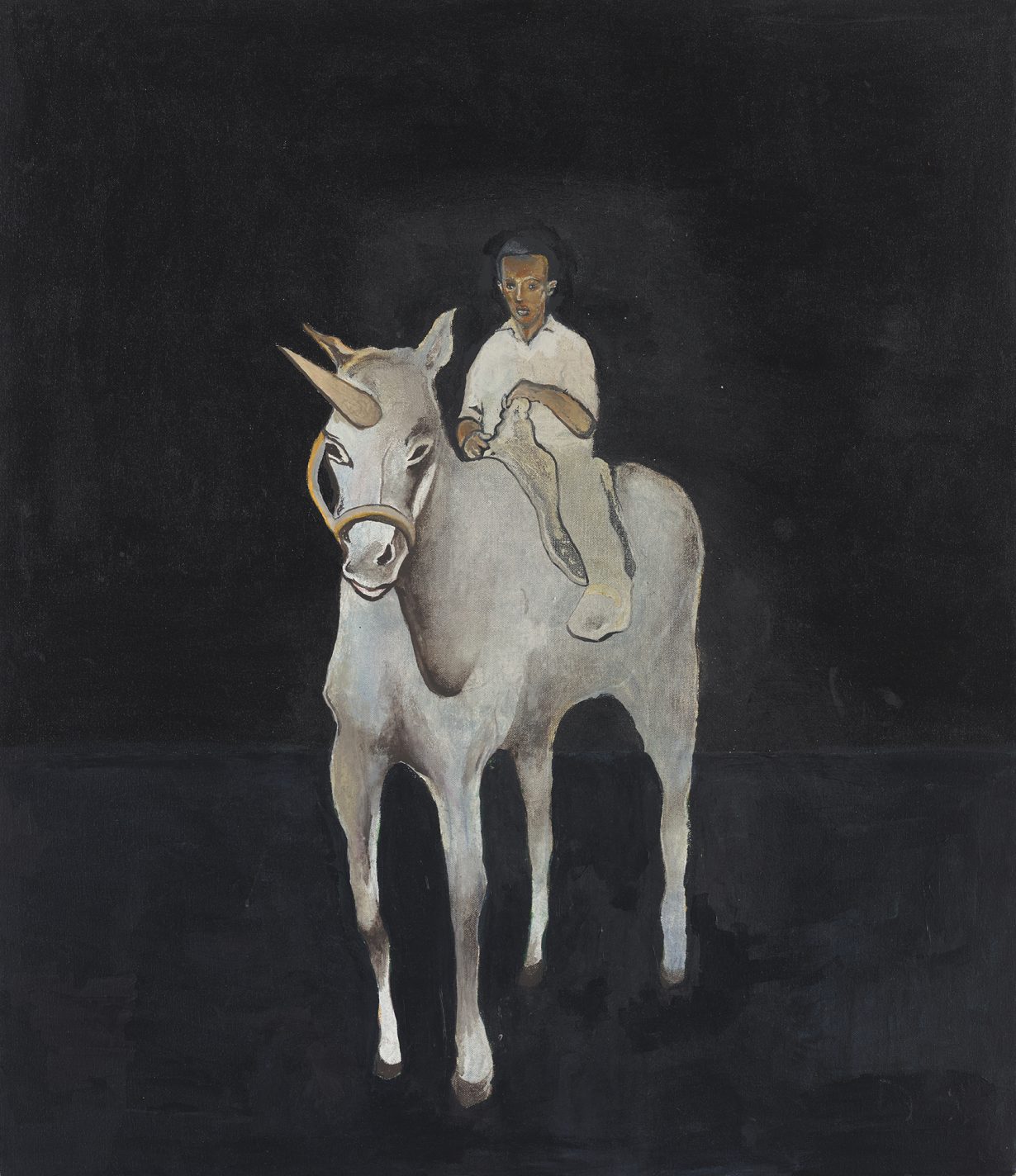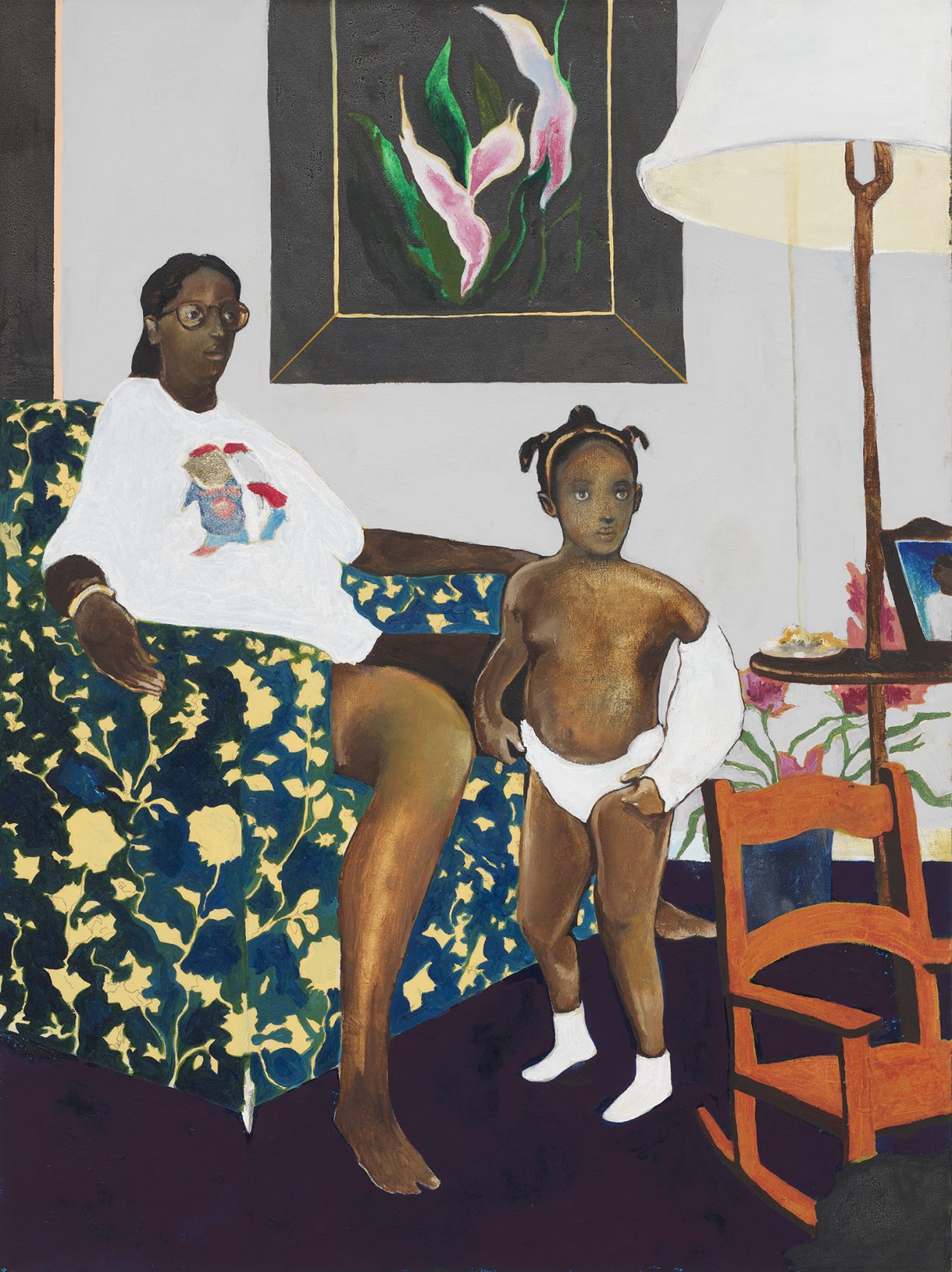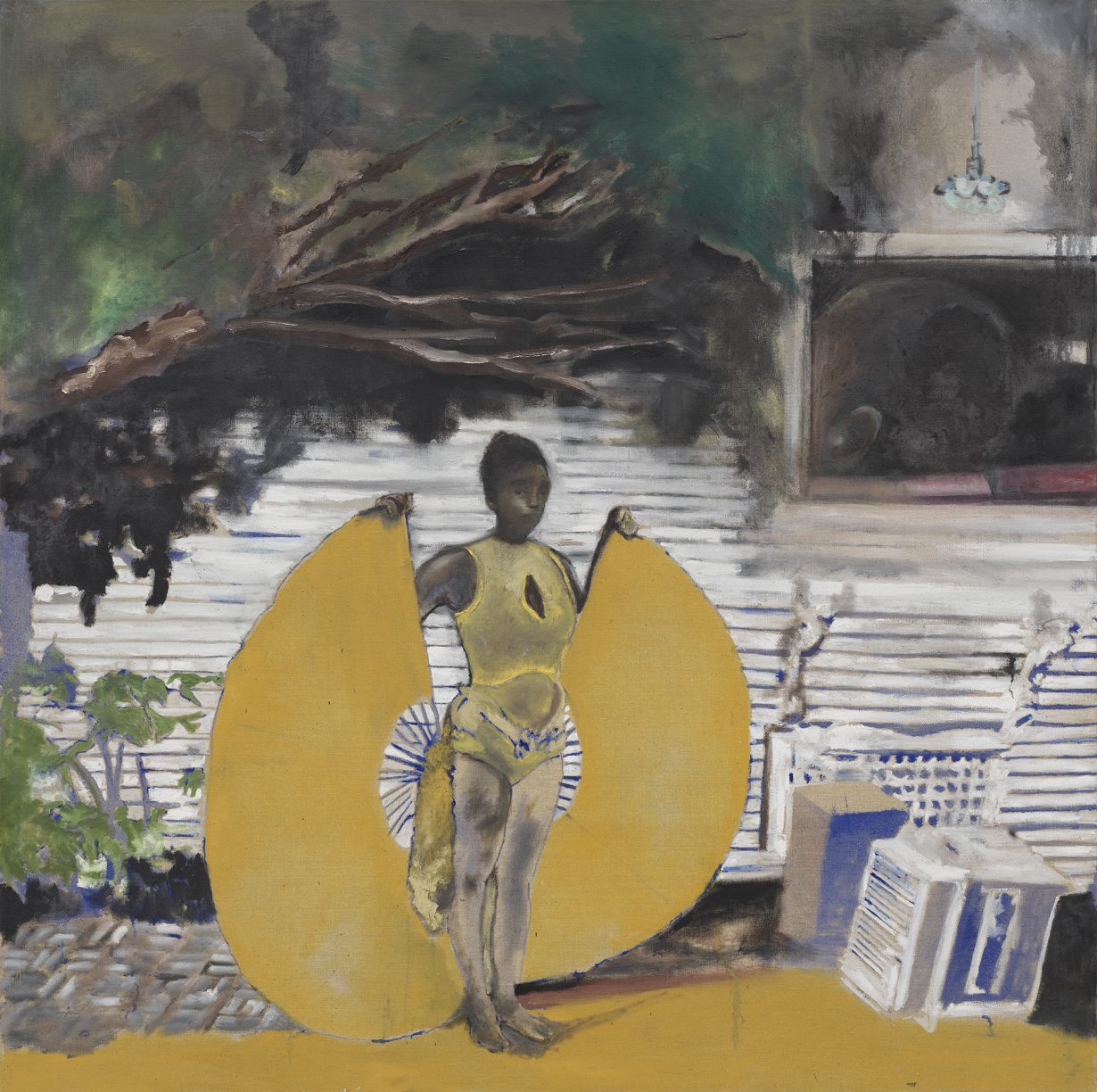The late artist’s painting, on show at the Barbican, positions ordinary people and ordinary life as a thing to be cherished
A note the late Noah Davis scribbled to himself – ‘best fucking painter alive’ – encapsulates the ambition of an artist who only had a short time to prove it. As it turned out, Davis died of cancer in 2015, aged 32. This retrospective consequently makes you project the what-could-have been, even as we watch, over eight years, a painter figure out what he’s about, what he wants to say and – toughest of all – to work out the painterly language he needs to turn this into images that endure.
What stands out in Davis’s approach is his commitment to painting as an artistic legacy, to be claimed by anyone who might want to pursue it. Harnessed to this is his project of representing Black subjects, and the social experience of Black people in America. Davis’s painting is social realism that reaches for something mythical – a kind of magical realism where present, past and fable combine. The early work 40 Acres and a Unicorn (2007) offers us a young man, maybe a boy, diffident and watchful, who has arrived from out of the ink-black background astride a greyish white unicorn. The pair are wobbly and unstable, shaped by the flowing and disintegrating contours of Davis’s flat and unshowy rendering, in danger of being swallowed by the darkness that surrounds them. Hinting at the dashed expectations of post-civil war era America (freed slaves had been promised ‘40 acres and a mule’), it’s an allegorical work that already points to Davis’s empathy for vulnerability, while positioning ordinary people and ordinary life as a thing to be cherished.

From there, Davis weaved a path between realism and the surrealistic, trying out all manner of art historical precedents while circling around the millennial politics of race. In Bad Boy For Life (2007) a peculiarly old-fashioned scene finds a mother, her mouth absent, as if erased, spanking her son across her lap; behind her is candy-striped wallpaper and a black sideboard that might as well be bits of hard-edged abstraction. If its title hints at social and racial stereotypes, so does Single Mother with Father out of the Picture (2007–08), which by contrast negates such allusions with its poised scene of a woman in a floral-patterned armchair, her infant child standing before her, both looking out, with cautious attention, towards some point or person beyond the frame.

There’s a tightness and awkwardness in these works, both of line and application, that Davis would quickly move on from, as he brewed his own blend of skewed figuration; trying out the bleak pessimism of Marlene Dumas in 1984 (2009), a child wearing striped pyjamas sits on the corner of a bed, their face concealed by the sinister blankness of a white mask; or the collapsed painterly space and cut-and-paste artificiality of the Leipzig School painters, in works such as the lone hatted man striding across the almost Mondrian-like planes of the empty street in The Missing Link 3 (2013). But Davis pushes out the weirder excesses to settle on a more realist view that nevertheless is fringed with the fantastical. Isis (2009) depicts his wife Karon, dressed in a golden-yellow leotard, who stands under a tree in the yard of a house, holding two huge semicircular fans. They’re reminiscent of wings, or a radiant sun. If it gestures Egyptian mythos, which has long been an alternative origin story in African American counterculture, Isis is also a moment of superbly poised, gentle intimacy.
That care for everyday life courses through the series 1975 (2013), which foregrounds subjects found in photographs taken by his mother when she was a student in Chicago. Here there’s no abrasive edge, just the celebration of minor moments – people bathing and diving into a blank blue pool; a woman’s head of braided hair, in the background anonymous storefronts; a lecturer in a classroom reading from a sheet. Davis’s insistent reduction of detail – faces are blurred, hazed by memory and time – makes for an atmosphere privileging place and community.

The community that Davis looked for hovered between nostalgia and the making of alternative presents; in the mesmerising, purple-skied twilight scene of Pueblo del Rio: Arabesque (2014), six women in white ballgowns or tutus dance on the lawns between modernist terraced houses. To know that Pueblo Del Rio was a postwar Los Angeles housing project designed in part by the African American architect Paul Revere Williams (elsewhere the subject of Davis’s The Architect, 2009), and that it quickly fell to white flight and job loss, turns Arabesque into a what-could-have-been had race, politics and economics not intervened. But it’s also a hymn to art and culture; Davis’s demand that everyone should expect such things as a birthright. It’s a sentiment reasserted in the reconstructed presentation of Davis’s ‘knock-off’ contemporary art masterpieces – Dan Flavin-like neons, a remade Duchamp bottle rack, a Jeff Koons Hoover – which Davis and his wife exhibited in the show Imitation of Wealth (2013) at the Underground Museum, their gallery founded in Arlington Heights in 2012.
In the end, though, there is death, before which we are alone. Among Davis’s visions of conviviality are portraits of solitude. There’s his deceased father standing on a rocky cusp, looking into the void, carrying only a lantern to find his way (Painting for My Dad, 2011); the distant funeral group of Untitled (2015), around a white coffin almost disappeared from the painting’s lower edge, beneath a huge wash of vacant blue sky; and the hunched, elderly man of Untitled (2015), little more than a silhouette, a container of smokelike veils of paint, as he shuffles past Barnett Newman-like columns of mauve and grey, fading towards his exit. It’s an astonishing painting, an image that endures.
Noah Davis at Barbican, London, through 11 May
From the March 2025 issue of ArtReview – get your copy.
